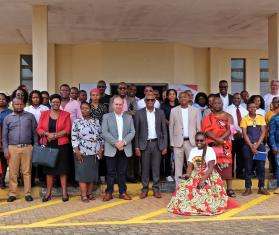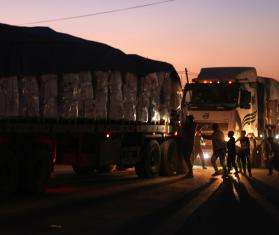Video testimonies from Syrian patients in Jordan
Refugees fleeing the conflict in Syria are arriving in Jordan every day, following different routes but almost always ending up in one of the refugee camps set up at the border crossing in the Jordanian town of Ramtha.
M. crossed the border at night with his family.* It was a long trip from their home in Homs, in western Syria. M., his wife—who is seven months pregnant—and their four children took a bus to Damascus and then a taxi, paid for by others, to the border. They crossed the border on foot. Now they are waiting in the Beshabshe camp in Ramtha. As soon as someone agrees to sponsor them, they may leave. If this happens, they will probably head to Amman and settle there. The Jordanian capital is only 70 kilometers [about 44 miles] away.
M. also hopes to receive medical treatment. A month ago, while heading home on his bicycle in Homs, he was stopped by Syrian security forces and shot in his left side. He went to a medical center in Homs but received only basic care. "When the bullet came out, they cleaned the wound," he says. "[But] if the bullet had stayed inside my body, they would have left it there. They didn't have the means to do anything else. I was there for half an hour—it was too dangerous to stay longer. I haven't received any further treatment." He has had lingering pain in his hip since then.
A specialized Doctors Without Borders/Médecins Sans Frontières (MSF) surgical team performs operations in a hospital in nearby Amman. Dr. Mohamed, a member of the team, came to Ramtha to determine whether any of the new arrivals were in need of orthopedic surgery. "The wounded people we see here have already received urgent care in Syria," he says. "They usually have old wounds that date back several weeks or months.”
The refugee camps in Ramtha are more like transit camps, and Syrians generally do not stay very long. Dr. Mohamed visits Ramtha every few days. He gives his telephone number to the wounded patients he sees—including M.—so that they can contact him when they reach Amman and arrange to be seen.
The wounded all have stories to tell. Twenty-five-year-old X. lifts his polo shirt to show angry purple-red marks on his back. His arms were also lacerated when he was hit with rubber cables after being arrested while participating in a demonstration in Deraa. He says he was tortured in prison, where he remained for 17 days before he was transferred to Damascus. He was freed en route during an attack by the Free Syrian Army and immediately set out for Jordan.
In another camp that was set up in a stadium, the refugees are all young men. Some are wounded and one walks with crutches; a bullet had fractured his left leg. Another man was shot in the face. He lost his right eye, suffered multiple jaw fractures, and can no longer open his mouth normally.
Dr. Mohamed delivers the same message to all these wounded men: they can come to Amman and see an MSF surgeon, who will determine whether surgery is possible.
Initially, the MSF team in Amman performed only reconstructive surgery, treating victims of violence from Iraq, Libya, Yemen, and other countries. However, the number of Syrian refugees arriving in Jordan with bullet wounds and other injuries has grown steadily since the revolt broke out in their country.
As a result, MSF has strengthened its orthopedic surgery team. An MSF surgeon examines five to ten patients weekly at the hospital, about one-third of whom require orthopedic surgery. Another third receive physical therapy and the remaining third are monitored. X-rays are performed regularly to observe their fractures.
“On the other hand,” says Dr. Mohamed, “people who are in very serious condition remain inside Syria and can't make it here."
*Names withheld to protect patient identity.



